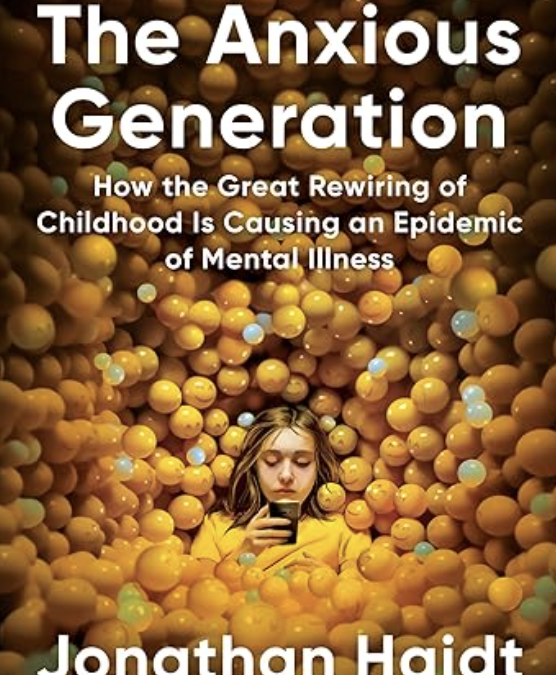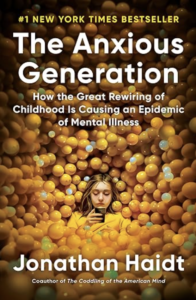This week, we’ve decided to replace our normal post with an extended book recommendation. Given that the nature of our work is to help people avoid distraction and focus on what matters most to them, it was illuminating to read this book and see the impacts of social media on kids, when we already know how hard and fraught it is for ourselves and our adult clients to manage. Navigating distraction, accountability, and social media is not easy, but we are going to try. We hope you enjoy diving deep into Jonathan Haidt’s book, The Anxious Generation, which is eye-opening for both social media users and parents of current or future social media users.
The Anxious Generation: How the Great Rewiring of Childhood is Causing an Epidemic of Mental Illness | Jonathan Haidt
I began reading The Anxious Generation as part of an informal book club at my daughter’s middle school. The book discusses how kids born after 1995, who were introduced to smartphones during adolescence, are experiencing significant negative mental health impacts. It introduces terms like the “Great Rewiring of Childhood” and highlights the shift from a play-based to a phone-based childhood. Haidt’s insights urge us to realize how these profound changes are affecting our young people’s mental health.
Reflecting on my work around attention and focus, I’ve tried various strategies to manage my own phone usage, from deleting distracting apps to setting time limits and having family check-ins about screen time. This doesn’t even cover how social media sometimes makes me feel, which is not good. Reading the psychology behind this in Haidt’s book is fascinating. While some of it is obvious, much happens below the level of conscious awareness. Navigating this, even as an adult, with a fully formed brain, a play-based childhood, and a lot of tools in my toolbelt, is challenging.
As my daughter nears 13, she insists that everyone has Snapchat. Haidt advocates for delaying adolescent social media use until age 16 to allow for more brain development. I explained this to my daughter, and though she was initially upset, she agreed to listen to the chapter on social media’s impact on girls. Haidt explains that girls are more susceptible to visual comparison, social aggression, shared emotions, and predatory behavior. My daughter astutely observed that it felt like I was saying she couldn’t have Snapchat because she is a girl. She was partially right.
The Social Media and Youth Health Report
I don’t know if all of Haidt’s assertions are correct, but I do know that the surgeon general’s May 2023 report, Social Media and Youth Health, highlighted a knowledge gap due to the lack of data and transparency from social media companies. The report also included recommendations for policymakers to improve conditions for children and youth. There are important unanswered questions, such as:
- How does the use of social media, including specific designs and features, relate to dopamine pathways involved in motivation, reward, and addiction?
- What type of content, and at what frequency and intensity, generates the most harm? Through which modes of social media access (e.g., smartphone, computer) and design features? For which users and why?
I would love to know those answers. I remember feeling like my daughter does now, that I had to be on social media because everyone else was, and I didn’t want to miss out. While I have experienced moments of joy and connection, on balance, the time spent hasn’t been worth it.
You’ll see much less of AW on Instagram as we limit our presence there to announcing our events, workshops, and enrollment. We will stick to LinkedIn for business updates and networking. Thank you for your support as we figure out how to use social platforms in a way that feels healthy to us and maximizes our ability to focus on what matters most.




